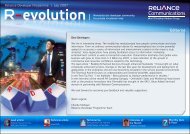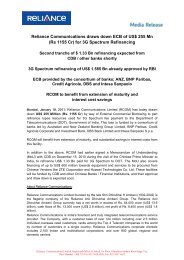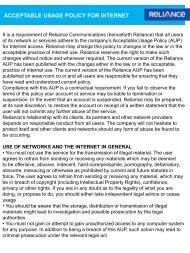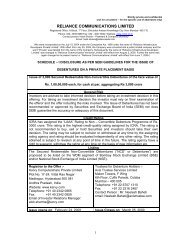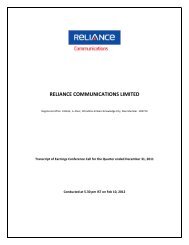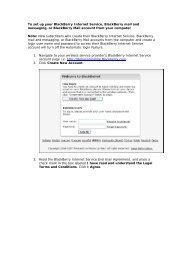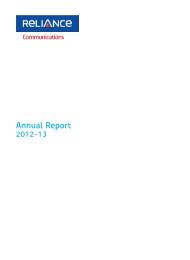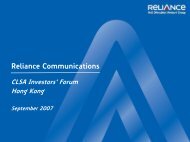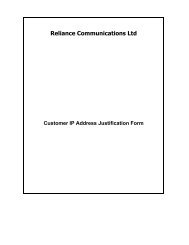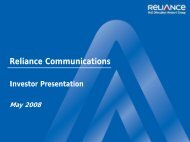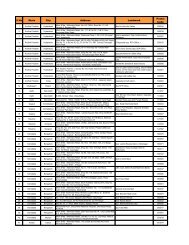WHITE PAPER SERIES - Reliance Communications
WHITE PAPER SERIES - Reliance Communications
WHITE PAPER SERIES - Reliance Communications
Create successful ePaper yourself
Turn your PDF publications into a flip-book with our unique Google optimized e-Paper software.
EXISTING SOLUTIONS<br />
As the liberalization was impacting many areas, it<br />
took a while before it actually hit the telecom<br />
sector. Until then, the incumbents had the service,<br />
but the same was never marketed. Most of the<br />
subscribers of the toll free service were essentially<br />
those MNCs who had understood and appreciated<br />
the service benefits by availing the service in the<br />
other parts of the world. With mobile services<br />
getting launched, the concept of “Off-net” call was<br />
introduced. A premium customer using a premium<br />
handset and paying premium rates for calls<br />
“incoming” to his mobile suddenly realized that he<br />
cannot call a toll free number…<br />
Consider a case where “A” is a phone subscriber of<br />
service provider “X” and “B” is a toll free service<br />
subscriber of service provider “Y”. For any call to<br />
the toll free number from “A”, the service provider<br />
“X” cannot bill “A” despite part of the network of<br />
“X” getting used to complete the call. On the other<br />
hand, service provider “Y” gets the revenue from<br />
the subscriber of the Toll Free service.<br />
Product Details<br />
It was only expected that the service would be<br />
launched with limited accessibility. The telephone<br />
users of the same service provider who is providing<br />
the toll free service would be able to access the toll<br />
free number. Thus, the available product was<br />
essentially with “on-net”access and obviously had<br />
the limited acceptance.<br />
Features & Benefits<br />
The basic feature was the reverse charging<br />
capability i.e. the subscriber of the toll free number<br />
pays for the call and not the caller. For the caller,<br />
there are no charges.<br />
The IN based features such routing of the calls on<br />
the basis of the time or the originating location<br />
were also used depending on the user needs.<br />
Limitations<br />
As a purely “on-net” service, the marketers could<br />
not promote the number effectively. An average<br />
caller shied away from attempting a call on this<br />
number, especially if he had faced accessibility<br />
issue in the past. Even those aware about this<br />
limitation, would struggle to relate a particular toll<br />
free number to a particular operator.<br />
With more operators entering the market and with<br />
more customers demanding toll free service, it was<br />
essential to arrive at an interconnect agreement<br />
across service providers. This was easier said than<br />
done as there were no specific guidelines on the<br />
same.<br />
White Paper Series Page 4




